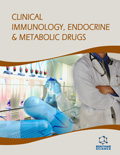Abstract
Nickel is a chemical element found ubiquitously in the environment and is used with a high frequency worldwide. Nickel hypersensitivity could give rise both to contact dermatitis and to systemic contact dermatitis, the latter, as expression of ingestion or other systemic exposure to a contact allergen. The common clinical presentation of nickel allergic contact dermatitis (ACD) is more often a vesicular pruritic dermatitis in sites of prolonged skin contact with nickel-containing items. Patients can develop acute (bright red rash, edema and vesicle), subacute (less erythematous and edematous lesions, minimal vesiculation, and excoriation) and chronic manifestations (fissuring, scaling, excoriation and mild form of erythema). Systemic contact dermatitis is induced in sensitized individuals when they are exposed to a hapten systemically. In the detection of contact allergy, and in the diagnosis of ACD, patch test is the generally accepted method of choice and the “gold standard”. Their execution increases the probability of correct diagnosis, shortens the time lapse between first visit and final diagnosis, increases the chance for full remission, and reduces therapy costs. Management of nickel allergy is still complex for dermatologists. Between 1994 and 2009, nickel allergy showed a decreased in morbidity; however, after 2000, there was no significant decrease. Exposure to nickelcontaining products exceeding the permitted limit may explain the high persistence of nickel contact allergy in population. In 2001 the European Union, to reduce the exposure to nickel, introduced standards for the productions of tools intended for prolonged skin contact.
Keywords: Allergy, hypersensitivity, metal ions, nickel, nickel dermatitis, secondary eruption, RCLM.
 11
11

